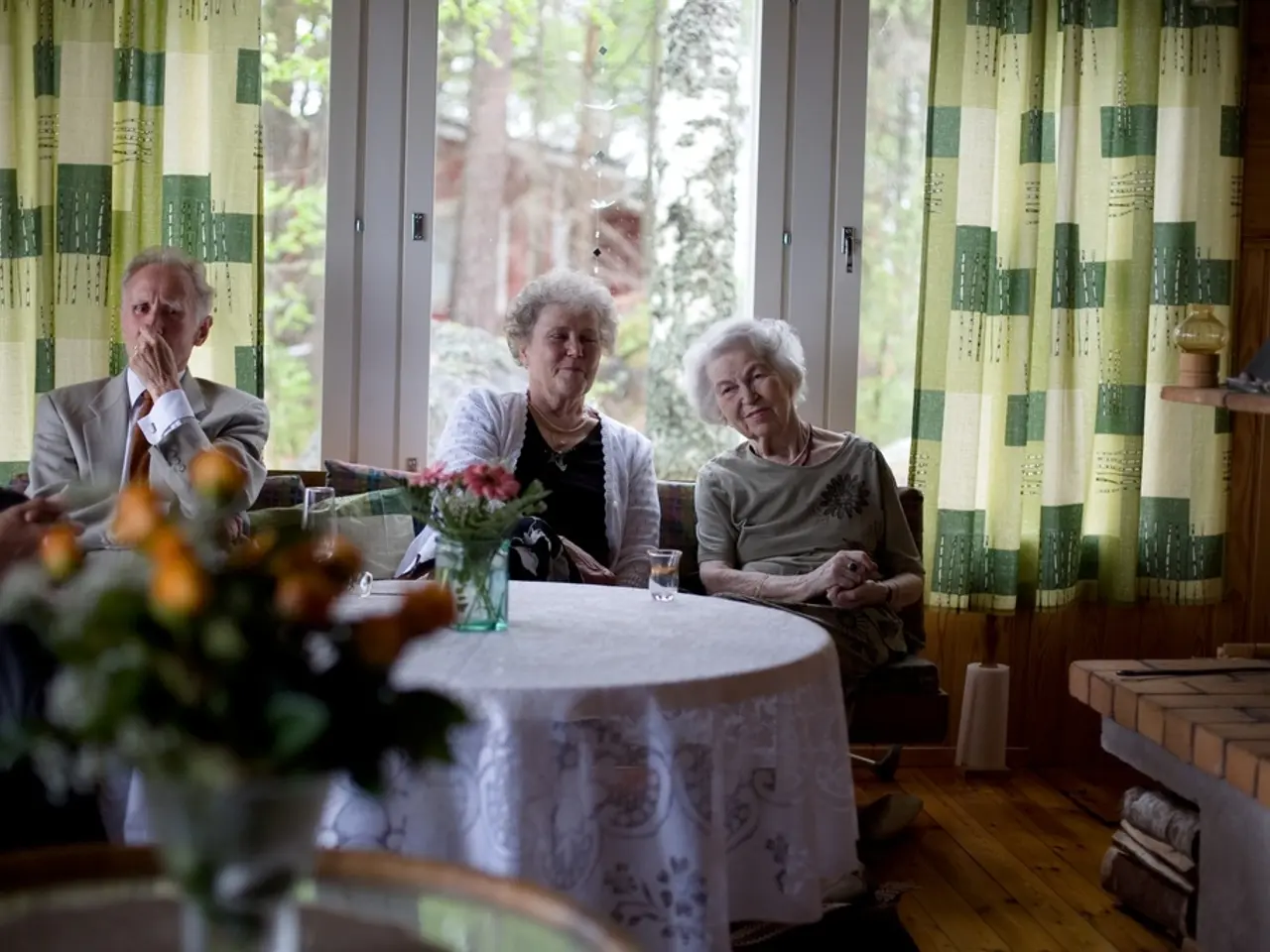Guiding Older Adults and Their Loved Ones: Strategies for Alleviating Anxiety in the Golden Years
Anxiety in older adults can be a complex issue, stemming from various factors such as significant life changes, chronic health conditions, and psychological stressors. Retirement, relocating, or the loss of loved ones can all contribute to feelings of anxiety in older adults [1][2][5].
Recognizing the signs of anxiety is crucial, as symptoms can manifest in different ways, including restlessness, fatigue, difficulty focusing, or physical issues like rapid heartbeats. Social isolation, a common issue among seniors, can lead to feelings of loneliness and sadness, further worsening anxiety [1][2].
Seeking professional help when necessary is essential. Understanding the basics of anxiety can help families recognize when their loved ones need support. Therapeutic options, such as cognitive-behavioral therapy (CBT), can improve the quality of life for older adults with anxiety [1][5]. Some individuals with anxiety may benefit from medication, but it's important to discuss this with a doctor to understand potential side effects.
A holistic approach is key to managing anxiety in older adults. This includes medical management, psychosocial support, cognitive and sensory support, routine and environmental adjustments, financial and practical assistance, non-pharmacological therapies, and regular screening [1][3][5].
Medical management involves careful assessment to treat underlying physical illnesses and review medications that may worsen anxiety symptoms [1]. Psychosocial support provides emotional support, grief counseling, and social engagement to reduce isolation [1][5]. Cognitive and sensory support addresses sensory impairments (e.g., hearing aids, glasses) and cognitive support to help reduce vulnerability and confusion that exacerbate anxiety [1].
Routine and environmental adjustments involve maintaining consistent daily routines, adapting living environments to be safe and comfortable, and easing transitions such as moves to assisted living [1][5]. Financial and practical assistance offers resources for financial planning and support to alleviate economic stress [1][2].
Non-pharmacological therapies include techniques such as cognitive-behavioral therapy, relaxation exercises, physical activity suited to ability, and community programs. These can help manage symptoms without overreliance on medications [1][5]. Regular screening ensures periodic mental health assessments to monitor anxiety and related depression, allowing early intervention especially in high-risk groups [3].
Together, families can create an atmosphere of hope and resilience, allowing older adults to enjoy their later years with greater peace of mind. Simple strategies, such as fostering social connections through community events, joining clubs, or spending time with family, can combat loneliness in older adults. Physical activity, even simple exercises like stretching or gentle yoga, can reduce anxiety levels in older adults [1][5].
In summary, managing anxiety in older adults requires addressing physical health, emotional well-being, social factors, and environmental contexts holistically to improve quality of life and reduce anxiety-related burdens [1][3][5]. Understanding these factors is the first step in addressing anxiety in older adults. Maintaining a regular routine, such as daily crafts, gardening, or walking, can help create a sense of stability for older adults.
Engaging in conversations about mental health and recognizing the signs of anxiety, such as restlessness, fatigue, difficulty focusing, or physical issues like rapid heartbeats, is crucial in supporting older adults, many of whom may struggle with anxiety due to various factors like health-and-wellness challenges, retirement, relocation, or the loss of loved ones. To manage anxiety holistically, a combination of approaches might be beneficial, including therapeutic options like cognitive-behavioral therapy and regular mental health screenings, as well as social connections, physical activity, and routine to maintain emotional well-being and peace of mind.




